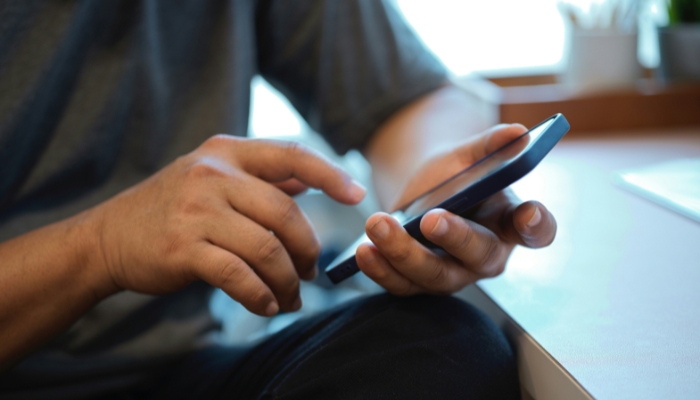
Ever wondered how to check carrier lock on iphone? You’re not alone. This common issue may be a result of your iPhone being carrier-locked.
In simple terms, your iPhone is locked to the original carrier it was purchased from, preventing you from using it with any other service provider. But how do you check if your iPhone is carrier-locked?
To check if an iPhone is carrier-locked, look in the “Settings” under “General” and “About,” or try using a SIM card from a different carrier. This information is crucial for users looking to switch carriers or sell their device.
The process isn’t too complicated, and by the end of this discussion, you’ll be well-equipped to figure out the status of your phone. Stick around to unveil the mystery of how to check carrier lock on iphone.
Understanding Iphone Carrier Lock
Before you can fully appreciate the process of checking for a carrier lock on your iPhone, it’s essential to understand what an iPhone carrier lock actually is. Essentially, a carrier lock is a restriction placed on your iPhone by your mobile network provider. It’s a way for these companies to ensure that you’ll only use their network, limiting your ability to switch providers.
Now, how do you figure out your carrier lock status? You can do an iPhone carrier check. This involves either contacting your mobile network provider or using an online service to check your carrier lock status. There’s also the option of visiting the Apple Support Community, where you can find useful threads about carrier lock checks.
Why should you care about your iPhone’s carrier lock? Well, if you’re considering switching mobile networks or selling your iPhone, a carrier lock can cause complications. By understanding your carrier lock status, you’re empowered to make informed decisions about your device.
Importance of Checking Carrier Lock

Checking your iPhone’s carrier lock status is crucial in ensuring you’re not held back by network restrictions, especially when you’re considering changing your network provider or selling your device. Understanding the importance of checking carrier lock can save you from unexpected surprises. Let’s delve into why it matters.
If carrier lock status information shows that your phone is locked, you’re restricted to using only the network provider that locked the device. This can limit your flexibility, particularly if you’re planning to switch carriers. On the other hand, if a check for carrier shows your phone is unlocked, you’ve got the freedom to change to any network provider of your choice.
Moreover, if you’re looking to sell your iPhone, knowing its carrier lock status can significantly impact the resale value. Buyers often prefer unlocked phones as they offer greater network flexibility.
This is where a third-party IMEI checking service can come in handy. Such a service can provide accurate carrier lock status, giving you the certainty you need. Remember, the importance of checking carrier lock goes beyond mere curiosity; it’s about ensuring your phone serves your needs optimally.
Identifying Carrier on Your Iphone
Once you grasp the importance of knowing your iPhone’s carrier lock status, it’s equally valuable to identify the specific carrier for your device. It’s not a complex process and you can easily find this information on your mobile device itself.
Here’s how you can do it:
- Open the ‘Settings App’ on your iPhone.
- You should see an option called ‘Mobile Data’, or ‘Cellular’ if you’re using an American iPhone.
- The current carrier will be displayed at the top of this menu.
If you can’t find the carrier name in the iPhone settings, the device may be carrier locked. In that case, you might need to contact the seller or the carrier company.
Knowing your carrier is crucial, particularly when you’re thinking about switching providers or selling your iPhone. Many buyers prefer unlocked iPhones as they offer more freedom and flexibility.
Having this knowledge at your fingertips, you’ll be better equipped to handle any issues related to your carrier and make more informed decisions about your device.
How to Check Carrier Lock Status Directly on Your iPhone?

Checking the carrier lock status on your iPhone is a vital step, especially if you’re considering switching mobile carriers or selling your device.
The carrier lock status determines whether your iPhone is bound to a specific cellular carrier or if it’s free to use with any network. Here’s a straightforward guide to help you check this status directly on your iPhone.
Step-by-step Guide on Checking Carrier Lock in iPhone Settings
- Accessing iPhone Settings: Begin by tapping the ‘Settings’ icon on your iPhone. It’s the gear-shaped icon typically found on your home screen.
- Navigating to the About Section: In the Settings menu, scroll to and select ‘General.’ From there, tap on ‘About.’ This section provides detailed device details, including your iPhone’s current software features and network features.
- Locating the Carrier Lock Information: In the ‘About’ section, scroll down to find the ‘Carrier Lock’ or ‘SIM Status.’ This is where your iPhone displays its lock status.
Understanding the “Carrier Lock” Status in the ‘About’ Section
The ‘Carrier Lock’ section can show different messages, each indicating a specific unlock status. Here’s what they mean:
- “No SIM restrictions”: This message means that your iPhone is not tied to a specific network carrier. You’re free to use any compatible SIM card from any wireless service provider.
- “SIM Locked” or “Locked to Carrier”: If you see this, your iPhone is bound to a specific carrier, limiting your ability to switch cellular service providers without first unlocking the phone. This restriction is usually due to contractual obligations or the payment plan you chose when purchasing the device.
- Other Status Messages: Occasionally, you might see messages like “Unknown” or “No Service.” These messages could indicate a problem with the SIM card or require further investigation with your carrier representative or customer service.
Interpreting “No SIM Restrictions” and Other Status Messages
- “No SIM Restrictions”: This is the ideal status. It means you have complete freedom to switch between mobile service providers. Your iPhone can accommodate any compatible SIM card, whether it’s a pre-paid SIM card, an AT&T or T-Mobile SIM card, or one from international models of carriers.
- Carrier-Specific Messages: If the status mentions a specific carrier (like “Locked to Verizon”), your iPhone is restricted to that carrier network. To use a different provider’s SIM card, you’ll need to fulfill any unlock request requirements set by the current carrier.
- Error Messages: Sometimes, you might encounter an error message. These could be due to an invalid SIM card inserted into the physical SIM card tray or other issues. In such cases, using an eject tool to reinsert the SIM card or resetting your phone to factory settings might help.
- Troubleshooting Tips: If you’re facing issues understanding the status or if the status in settings doesn’t change post an unlock, consider using online tools like the AT&T IMEI checker or the iPhone carrier checker. These internet tools provide detailed information on the unlock status and network carrier details.
By following these steps, you can easily determine the carrier lock status of your iPhone. Remember, understanding your iPhone’s lock status is essential, especially if you’re a potential buyer or seller in the second-hand market.
It not only helps in ensuring that you’re in line with your carrier’s terms of service but also provides clarity on your device’s compatibility with various carrier options and mobile data plans.
Using Carrier Services to Determine Lock Status
Determining the carrier lock status of your iPhone is crucial for assessing iPhone carrier compatibility, especially if you plan to switch network carriers or sell your device. Carrier services offer reliable methods to check this status. Let’s explore how to use these services effectively.
Contacting Your Carrier: Process and Information Required
- Identifying Your Carrier: First, know your current network carrier. This could be one of the major cellular carriers like AT&T, Verizon, or T-Mobile, or it might be a regional provider.
- Gathering Necessary Information: Before contacting your carrier, prepare essential information. This includes your phone’s IMEI number (a unique 15-digit code found in your phone’s settings), your account details, and personal identification for security purposes.
- Reaching Out to Customer Service: Contact your carrier’s customer service department. This can be done through their official website, a direct phone call, or even visiting a local store. Telephone technical support is often the quickest way to get detailed information about your lock status.
- Making a Request: Once connected, request information about your iPhone’s carrier lock status. Be clear and concise in your communication. If you’re looking to unlock your device, inquire about the unlock request process and any contractual obligations or terms of service that might apply.
- Understanding the Response: The carrier representative will inform you about the lock status of your device. They might also guide you through any steps required to unlock your device, should you wish to do so.
Online Services Provided by Carriers to Check Lock Status
- Carrier’s Official Website: Most carriers provide an online checker service on their websites. By entering your phone’s IMEI number, you can get immediate information about your device’s lock status. This online web checker is a reliable method that offers quick and accurate results.
- Dedicated Unlocking Portals: Some carriers have dedicated portals for handling unlocking requests and status checks. These portals often require you to log in with your account credentials and provide detailed device details.
- Automated Services: Carriers may offer automated services either on their website or via a phone call, where you can get information about your carrier lock status by following a series of prompts. This is a quick method to get basic information without the need to speak directly to a representative.
- Carrier Apps: Many cellular service providers have their own mobile apps where you can check various details about your account, including your phone’s lock status. This is an essential service for tech-savvy users who prefer managing their account details on-the-go.
- E-mail Inquiries: If you prefer written communication, sending an email to your carrier’s customer service can also be an effective way to inquire about your iPhone’s lock status. It may take longer to get a response, but it’s a good option if you need to have the information in writing for future reference.
Using carrier services to check your iPhone’s lock status is a straightforward process. Whether you choose to call, use online services, or visit a store, carriers are equipped to provide you with the necessary information.
This knowledge is invaluable for potential buyers and sellers in the mobile market, ensuring transparency and confidence in the trade of unlocked devices and second-hand Apple devices.
Third-Party Services for Checking iPhone Lock Status
When it comes to checking the lock status of an iPhone, third-party services offer an alternative to carrier-based methods. These services can be particularly useful if you’re dealing with a second-hand Apple device or if your carrier is not providing the necessary information.
Overview of Reliable Third-Party Websites and Tools
- Wide Range of Options: There are numerous online platforms and tools available for checking an iPhone’s lock status. These range from IMEI24 a free IMEI checker, to more comprehensive services that offer detailed carrier reports.
- Specialized Services: Some third-party websites specialize in providing detailed information about iPhones, such as unlock status, carrier limitations, and even the original owner details. They use the device’s IMEI number to pull data from various databases.
- User-Friendly Interfaces: Most of these services have simple, easy-to-navigate websites. They provide a straightforward way to input your device’s IMEI number and receive an instant report on the lock status.
How to Use These Services and What Information They Provide
- Finding the IMEI Number: Before using any third-party service, locate your iPhone’s IMEI number. This can be found in the phone’s settings or by dialing *#06#.
- Choosing a Service: Select a reputable third-party service. Look for reviews or recommendations to ensure reliability. Websites like IMEI24 or the iPhone Carrier Checker are commonly used.
- Entering the IMEI Number: Once on the website, enter your iPhone’s IMEI number into the provided field. Some services may require additional information, like the phone model or network carrier.
- Receiving the Report: After submitting the IMEI number, the service will generate a report. This report typically includes the unlock status, the carrier the phone is locked to, if any, and possibly the contractual obligations associated with the phone.
- Detailed Analysis: Some services go a step further, providing a comprehensive carrier report that includes the history of the carrier, payment plan details, and whether the phone was reported lost or stolen.
Precautions and Tips for Using Third-Party Services
- Choose Reputable Services: Opt for well-known and reputable services to avoid scams. Look for user reviews and ratings to gauge the service’s reliability.
- Beware of Hidden Costs: While some services are free, others might charge a fee. Be clear about any costs involved before proceeding.
- Protect Your Privacy: Be cautious about sharing personal information. Only provide the necessary details required to check the lock status.
- Avoid Unauthorized Unlocking Services: Stay clear of any unauthorized third-party unlocking methods. These could potentially breach carrier terms of service and might lead to security issues.
- Cross-Check Information: For accuracy, consider cross-checking the information provided by third-party services with your carrier or other online tools.
- Technical Support: In case of discrepancies or doubts, many third-party services offer customer service or technical support. Don’t hesitate to reach out to them for clarification.
Third-party services are a practical choice for checking an iPhone’s lock status, useful for both potential buyers of second-hand devices and users needing to know their network compatibility. While convenient, it’s essential to use reputable services, be aware of any fees, and respect the terms of service of your device.
These services are valuable for ensuring compatibility with different carriers, especially for frequent travelers or those switching carriers. However, they shouldn’t be the sole source of information; verify their findings with your carrier or other online tools.
In summary, these services are helpful for both sellers and buyers in providing key information about a device’s network status, but they should be used carefully and as part of a broader approach to understanding your iPhone’s capabilities.
Understanding Different Types of Locks on iPhones

iPhones can have various types of locks, each serving a different purpose and affecting the phone’s functionality in distinct ways. The most common ones are the carrier lock and the iCloud lock. Understanding these locks is crucial, especially if you’re planning to purchase a second-hand iPhone or travel internationally.
Difference Between Carrier Lock, iCloud Lock, and Others
- Carrier Lock: A carrier lock, or network lock, restricts your iPhone to a specific cellular service provider. It means that your phone can only use a SIM card and services from the carrier it is locked to. This type of lock is often applied by carriers to ensure that the phone remains on their network for a certain period, usually tied to a payment plan or contractual obligation.
- iCloud Lock: Also known as Activation Lock, the iCloud lock is a part of Apple’s Find My iPhone service. Once you sign in with your Apple ID and enable Find My iPhone, the anti-theft feature activates. This lock stops others from using your iPhone if it gets lost or stolen, requiring your Apple ID and password to unlock it.
- Other Locks: Other types of locks can include passcode lock, which is a basic security feature allowing you to set a numeric or alphanumeric password to access your device. There are also regional locks, which are less common, restricting the phone to operate only in certain geographical areas.
How Each Type of Lock Affects the Functionality of Your iPhone
- Impact of Carrier Lock: Carrier locks limit your ability to switch to different mobile carriers or use local SIM cards when traveling abroad. This can be inconvenient for users who often travel or wish to change their service provider for better plans or coverage. Carrier-unlocked iPhones are more versatile and generally have a higher resale value.
- Impact of iCloud Lock: The iCloud lock significantly impacts usability. If you purchase a second-hand iPhone that’s iCloud locked and you don’t have the previous owner’s Apple ID and password, you will not be able to use the phone. It essentially makes the device unusable unless unlocked by the original owner. This feature is crucial for safeguarding personal information in case of theft or loss of the device, as it prevents unauthorized users from accessing and using the iPhone.
- Dealing with Other Locks: The passcode lock, while a basic feature, is critical for privacy and security. Forgetting your passcode can lock you out of your device, requiring a factory reset to regain access, which leads to data loss if not backed up. Regional locks are rare but can be problematic for international users, as they restrict the iPhone to specific areas, affecting its global usability.
For potential buyers in the used phone market, understanding the different locks on iPhones is crucial. Carrier locks can often be removed by meeting the carrier’s conditions, but iCloud locks are more stringent and require careful checking before purchase. It’s important to verify an iPhone’s lock status to ensure its full functionality.
Essentially, these locks serve purposes ranging from fulfilling carrier contracts to providing theft security. Being aware of these locks and their implications is key for anyone using, traveling with, or trading in iPhones, ensuring a hassle-free experience.
Troubleshooting Common Issues with Carrier Locked iPhones
Often, you might encounter certain issues with a carrier locked iPhone, but don’t fret, most of these problems can be resolved with a bit of troubleshooting. Understanding carrier lock policies is key to troubleshooting common issues. If you purchased your iPhone from a mobile phone carrier, it’s likely locked to that carrier’s network. Essentially, if you insert a SIM card from another carrier, your iPhone won’t work.
One common issue is that the iPhone carrier checker tool shows the wrong carrier. This usually occurs due to outdated information in the phone app. To solve this, simply update the app. If that doesn’t work, consider reaching out to your carrier for help.
Another issue could be the inability to unlock your phone despite following the right procedures. The problem might be that your phone isn’t yet eligible for unlocking according to your carrier’s policies. Review those policies and ensure you’ve met all the requirements.
Lastly, if you’re experiencing poor network reception, it could be due to being locked to a carrier with weak coverage in your area. If troubleshooting doesn’t improve the reception, you might want to consider switching carriers.
How to Unlock Your iPhone?
Now that we’ve examined some common issues with locked iPhones, let’s move on to the steps you need to take to unlock your iPhone. The unlocking process is straightforward, but it does require some patience.
Here’s a step-by-step guide:
Contact Your Wireless Carrier:
- Most carriers have specific conditions for unlocking your iPhone. Typically, your account must be in good standing, and the device must have been active for a certain period.
- Ask your carrier for the unlock code. Some carriers may charge a fee for this service.
Use a Third-Party Unlocking Service:
- If your carrier refuses to unlock your iPhone or charges a high fee, consider using a third-party unlocking service.
- These services work by providing an unlock code in exchange for a fee.
Enter the Unlock Code:
- Once you have the unlock code, you can enter it into your iPhone to complete the carrier unlocking process.
- Be careful not to enter the wrong code too many times, as this can permanently lock your iPhone.
Conclusion
So, now you’re all set to check your iPhone’s carrier lock status. Understanding this not only helps you unlock your device but also gives you more freedom with your phone. Remember, if you encounter issues, try the troubleshooting tips discussed.
With this knowledge, you’re one step closer to having a smooth, unrestricted iPhone experience. Keep exploring these tech tips and unlock the full potential of your device.
FAQs on How to Check Carrier Lock on Iphone
How do I find out if my iPhone is locked to a carrier?
To check if your iPhone is carrier locked, go to ‘Settings’ > ‘General’ > ‘About.’ Look for the “Carrier Lock” status. If it says “No SIM restrictions,” your iPhone is unlocked. Alternatively, you can contact your carrier or use third-party services for detailed information.
Can I unlock my iPhone myself?
Generally, you cannot unlock a carrier-locked iPhone yourself. You need to contact your carrier and meet their specific requirements, which may include completing your payment plan or fulfilling the contractual period. Once these conditions are met, the carrier can unlock your iPhone.
Does a factory reset remove a carrier lock?
No, performing a factory reset on your iPhone does not remove a carrier lock. Carrier locks are linked to your phone’s IMEI number and are controlled by the network provider, not the device’s software. To remove a carrier lock, you must follow the process set by the carrier.